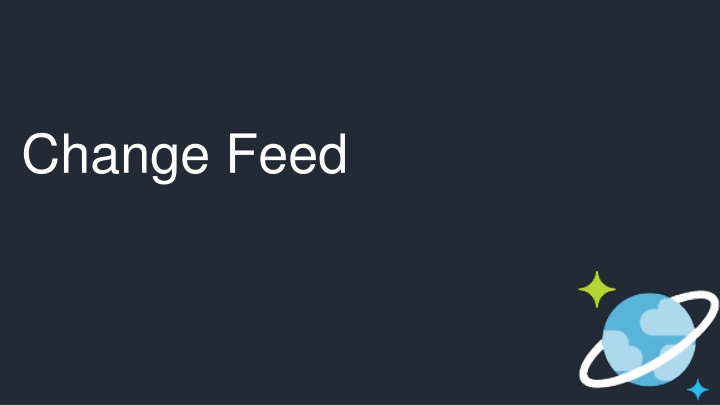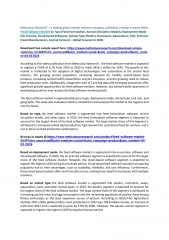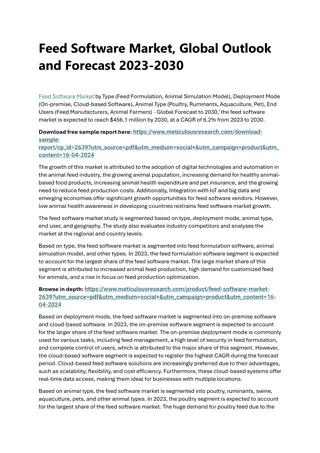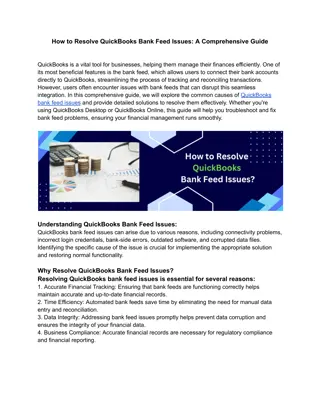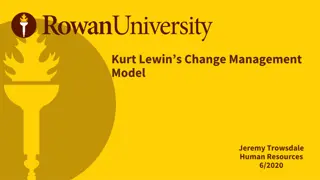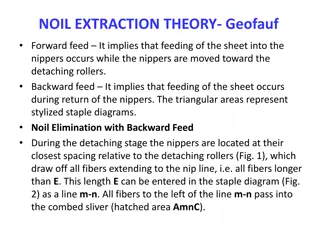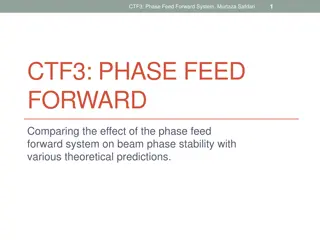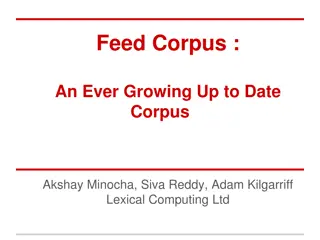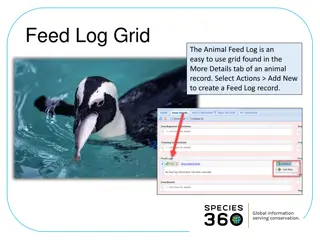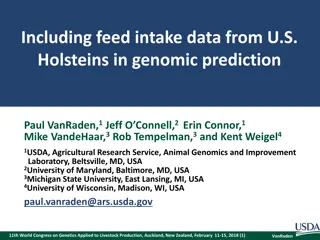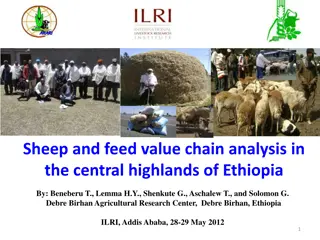Streamlining Data Movement and Processing in Azure Cosmos DB
Creating efficient pipelines for data movement and processing in Azure Cosmos DB can optimize operations and enhance performance. Explore change feeds, common scenarios, real-time data movement, retail order processing, and materialized views for advanced data management strategies.
Download Presentation

Please find below an Image/Link to download the presentation.
The content on the website is provided AS IS for your information and personal use only. It may not be sold, licensed, or shared on other websites without obtaining consent from the author.If you encounter any issues during the download, it is possible that the publisher has removed the file from their server.
You are allowed to download the files provided on this website for personal or commercial use, subject to the condition that they are used lawfully. All files are the property of their respective owners.
The content on the website is provided AS IS for your information and personal use only. It may not be sold, licensed, or shared on other websites without obtaining consent from the author.
E N D
Presentation Transcript
Cosmos DB Change Feed Persistent log of documents within an Azure Cosmos DB collection in the order in which they were modified
Common Scenarios Event Sourcing (Microservices) Read From Change Feed Persistent Event Store Microservice #1 Microservice #2 New Order Microservice #3 Trigger Action From Change Feed
1. Retail Order Processing Pipelines Azure Functions (E-Commerce Checkout API) Azure Cosmos DB (Order Event Store) . . . Azure Functions (Microservice N: Fulfillment) Azure Functions (Microservice 2: Payment) Azure Functions (Microservice 1: Tax)
2. Real-time data movement Backup Collection Data Movement / Backup Access upon main collection failure Replicate Updates Main Collection Secondary Collections CRUD Data Read access, e.g. for analytics
2. Real-time data movement This is useful for: Performing a live migration from one Cosmos container to another For example, to a container with a different partition key Replicating data to another collection optimize for different read operations For read-heavy workloads, sometimes it makes sense to replicate the same data two or more times (with different schema or different partition keys) to optimize for different read operation Replicating data to another type of storage (colder storage with less-rich query capabilities such as Azure Blob Storage) You can ingest data directly into Azure Cosmos DB and keep another data source synchronized. Then, you can set a TTL (time-to-live) on your Cosmos containers to have documents automatically deleted from Cosmos DB when the data is no longer hot and heavily accessed.
3. Materialized View Application Azure Cosmos DB Materialized View SubscriptionID UserID Create Date UserID Total Subscriptions 123abc Ben6 6/17/17 Ben6 2 456efg Ben6 3/14/17 Jen4 1 789hij Jen4 8/1/16 Joe3 1 012klm Joe3 3/4/17
Three different ways to use the Change Feed Implementation Use Case Advantages Serverless applications Easy to implement. Azure Functions Used as a trigger, input or output binding to an Azure Function. Change Feed Processor Library Distributed applications Ability to distribute the processing of events towards multiple clients. Requires a leases collection . SQL API SDK for .NET or Java Not Requires manual implementation in a .NET or Java application. recommended
Lease collection Required when you consume the change feed through the Change Feed Processor Library or an Azure Function Cosmos DB Trigger In the lease collection, a document is created for each physical partition to bookmark the latest document that was processed In general, 400 RU s should be enough for the lease collection. For very large workloads, you may need to increase up to a few thousand RU s. You should partition your lease collection by id
Change Feed Processor Library Behind the scenes Spin up instances of the processor as needed Each host has consumers = observer to implement Each host assigns itself leases on partitions to monitor On each change, logic in consumers gets triggered 1 lease collection stored in Cosmos DB
Change Feed Processor Interface Implementation public class DocumentFeedObserver : IChangeFeedObserver { ... public Task IChangeFeedObserver.ProcessChangesAsync(ChangeFe edObserverContext context, IReadOnlyList<Document> docs) { Console.WriteLine("Change feed: {0} documents", Interlocked.Add(ref totalDocs, docs.Count)); foreach(Document doc in docs) { Console.WriteLine(doc.Id.ToString()); } return Task.CompletedTask; } }
Change Feed Processor - Registration DocumentFeedObserver docObserver = new DocumentFeedObserver(); ChangeFeedEventHost host = new ChangeFeedEventHost( hostName, documentCollectionLocation, leaseCollectionLocation, feedOptions, feedHostOptions ); await host.RegisterObserverAsync(docObserverFactory);
Azure Cosmos DB Change Feed Summary Automatically enabled in any Cosmos DB database account Uses the existing allocated request units for processing events Executed on insert and update operations. Delete support can be implemented by creating a property called isDeleted (or similar), modifying this property (to act as an update), and then setting a TTL on the document to delete it.
